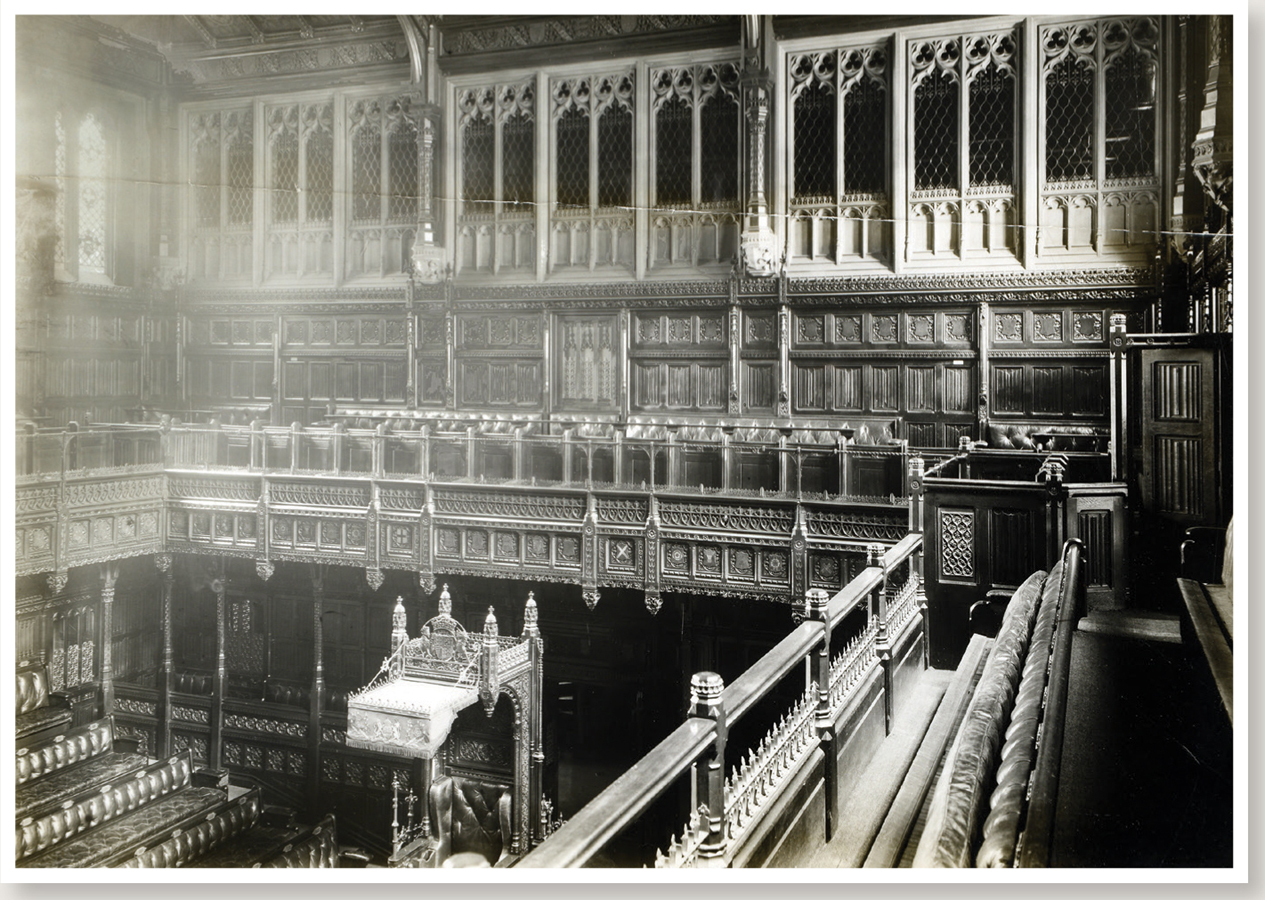The grilles through which female visitors could view proceedings in Parliament.
Women’s petitions for equal participation in Parliament
1911
In 1911, not only did women not have the vote; the grounds for divorce were still unequal, mothers did not have equal custody rights, and while women could study at more universities they were not entitled to the formal degrees that male students were. Without the Sex Disqualification Act that would follow in 1919, women were legally allowed to be discriminated against for jobs on the basis of gender or marriage.
So if you were a woman in 1911 how would you have been able to interact with parliamentary politics? Before 1834, a limited number of privileged women were able to observe parliamentary debates through a ventilation shaft in the ceiling of the House of Commons. After the 1834 fire in the Palace of Westminster, the Ladies Gallery was created – while less restricted than its predecessor, there were still distinct barriers between women and men in parliament. This was particularly emphasised by the grille that obscured women’s view, and hindered their ability to listen to debates. In many ways, this divide represented women’s wider position in society.
Women writing into the government complained as early as 1893 about the bad lighting in the Ladies’ Gallery, and famously two suffragettes chained themselves to the grille as a protest in 1908. At the height of the suffrage movement in 1911, the grille became a symbolic target to attack. A sign in the gallery alludes to the difficulties, stating ‘No demonstration of any kind to be permitted in the Gallery’.
One campaigner noted women were treated like ‘Animals in a cage’. AM Tooler wrote in 1911 to the Board of Works ‘on behalf of many women’, to complain that the Ladies Gallery in the House of Commons be changed, and the ‘insulting grid be removed’. Images of the time show the stark contrast of the opulent architecture of the House of Commons’ chamber with the minimal furniture in the Ladies Gallery.
Tooler argued that the women contribute to the state, through their work and pay, and therefore should be able to listen to debates in the chamber and ‘feel like human beings and not animals in a cage’.
The Ladies Gallery remained through the First World War, despite the workload increasingly carried by women, who were fundamental to the war effort – supporting the home front and the front line in the absences of men – and yet they had no formal way of influencing how the country was run.
In 1917, the battle continued against the grille, and a petition was sent by Philippa Strachey on behalf on London Society for Women’s Suffrage on 14 May 1917. Along with the Women’s Freedom League letter sent in 1916, these items show that contrary to common perception, many suffrage societies did continue to campaign through the war, and many individual women were still active, despite the Women’s Social and Political Union (WSPU) ceasing militant action.
The petition opens with the claim: ‘We could very easily have obtained many thousands of signatures but we believe that the representative character of those who have signed will convey even more conclusively the overwhelming demand among thinking women for the proposed action.’
Representatives included a vast range of signatories, from Clementina Black, honorary secretary of the Women’s Trade Union League and Miss Llewellyn Davies, the General Secretary of the Co-operative Guild, to women listed as being a trained nurse and midwifes.
The grille was eventually removed by a majority vote of MPs in August 1917, just a year before women themselves were able to sit on the other side of it, as participating Members of Parliament.

Oakwood Nook |
|
|
Roundhay |
|
Leeds |
Sir,
I am writing on behalf of many women to ask that the Ladies’ Gallery in the House of Commons be altered, the insulting grid be removed and the erection be brought into line with Western ideas. Women who work and suffer for the State and help to pay for its legislation will then be enabled to listen to debates and feel like human beings and not animals in a cage.
We pray that Colonial and other visitors this year may be spared the degrading sight of English womanhood relegated to an erection no better than a den.
Yours truly,
A. M. Foster
The First Commissioner
Works and Public Buildings